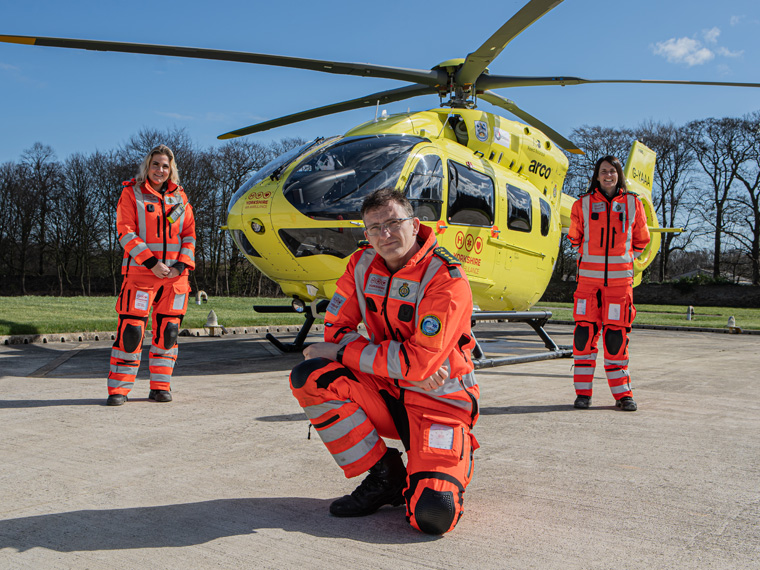Analgesia (pain relief) and sedation are a core component of the medical care Yorkshire Air Ambulance provide on an almost daily basis. In fact, 1 in 10 patients treated last year required high-grade analgesia during their incident.
Dr Neil Sambridge, who has worked as a doctor at Yorkshire Air Ambulance since 2016 talks us through analgesia and sedation and why we use it.
What is it?
Analgesia is the medical term for pain relief and sedation is a medical intervention we sometimes use for our patients, where we give patients a drug to relax them. The amount of drug given can vary and sedation can be described as minimal, moderate or deep. With minimal and moderate sedation, you feel drowsy, comfortable, sleepy and relaxed, but you remain conscious (awake) throughout the procedure. Deep sedation is between moderate sedation and anaesthesia (controlled unconsciousness). Depending on the level of sedation you may be aware of what is happening, but you are not in pain. Some of the drugs used can cause memory loss (amnesia) so you will not remember what has happened after the medical team arrive and give you a sedative drug.
Why we use it
Analgesia is of significant benefit to our patients. Pain from an injury or illness can be upsetting and distressing and we aim to alleviate this as best we can. Pain also limits what treatments we can give, and our treatments can cause more pain without additional pain relief. Sedation is used with pain relief to help our patients and the medical team when significant treatments need to be done before arrival in the hospital. For example, straightening a broken thigh bone would be difficult and cause significant pain and distress without additional pain relief and sedation.
How we do it
The medical team always assess our patients first and then decide the best treatment for the injury or illness. We carefully choose the drug or drugs to treat the patient, the injury or illness and consider the location and surroundings we are in. We continuously monitor your heart and breathing when using pain relief and sedation. Examples of the drugs we use include:
Entonox
This is also known as gas and air. It contains oxygen and nitrous oxide. It is a nitrous oxide that provides pain relief and can also cause some sedation. It works quickly and wears off quickly and is given by mouth as you breathe.
Morphine
Morphine is a strong pain killer. It is given through a vein in your arm or hand via a cannula (a small plastic tube) and works within a few minutes. It is useful for injuries or illnesses that are painful but do not require the medical team to provide advanced treatment before arrival in hospital such as pain in your abdomen, a broken arm that needs a simple splint to support it, or chest pain. Morphine lasts for a few hours and can make you feel sick, but we can help with the sickness by giving another drug to reduce the side effects.
Ketamine
Ketamine is a very useful drug and like morphine is given through a vein in your arm or hand. It provides excellent pain relief even if we have to treat and move painful injuries. It works quickly, lasts about twenty minutes and we can give more as needed. Ketamine is also an excellent sedative drug. By giving carefully controlled amounts we can achieve rapid pain relief and sedation at the same time. Because of the way it works on the brain, our patients when sedated with ketamine can appear more awake than they are. Their eyes may stay open and they may talk (often in a confused way) but they will be comfortable and will not remember anything afterwards.
Midazolam
We occasionally use midazolam for sedation. It does not provide any pain relief but can relax our patients, alleviate distress and they will not remember the events afterwards.
Other simple drugs and treatments
Reassurance, understanding, warmth and compassion are important components of our medical care and can help alleviate pain and distress. We use paracetamol through a vein in the hand or arm and this works faster and provides better pain relief compared to paracetamol tablets. Splinting a broken arm or leg is a good way to help the pain. The broken arm or leg is supported and prevented from moving while we transport our patient to the hospital.


